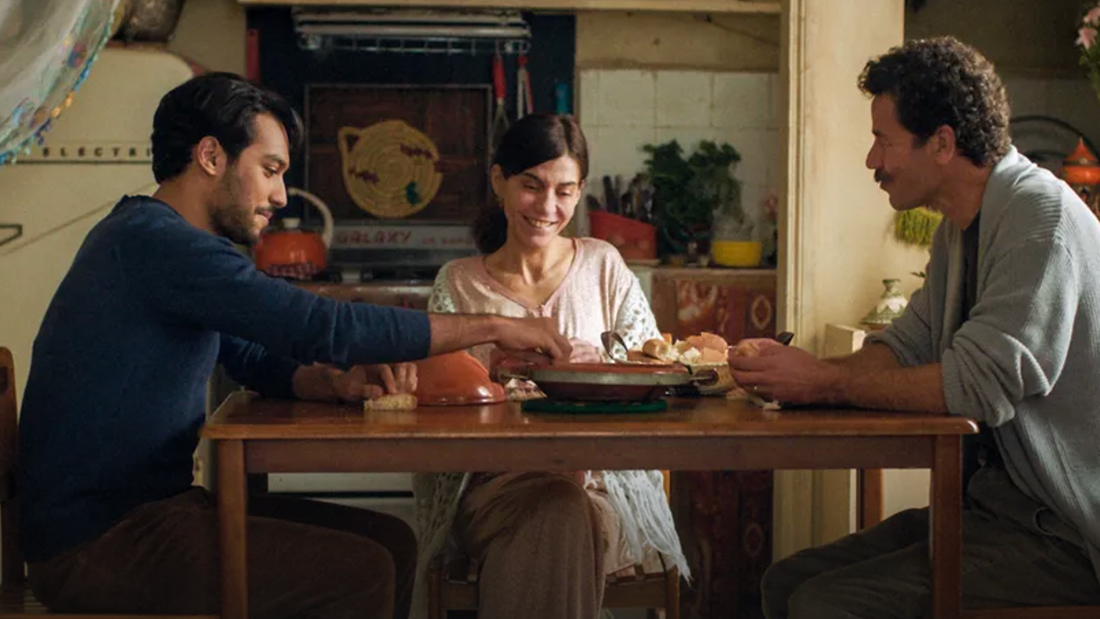
Review: The Blue Caftan – Medina Ménage à trois
Directed by Maryam Touzani
Starring Saleh Bakri, Lubna Azabal, Ayoub Missioui
8.5/10
This new film from Morocco manages to combine a taut, erotic love triangle with a bittersweet story of love and loss. Sweltering, repressed, and ultimately wonderful, The Blue Caftan is richly surprising.
Among the narrow, walled streets of a Moroccan medina, a middle-aged couple run a caftan atelier. They’ve fallen behind on their orders, as each caftan is hand stitched and sewn by master craftsman Halim (Saleh Bakri). His wife Mina (Lubna Azabal) grits her teeth while dealing with the impatient customers, but supports Halim nonetheless. To catch up they’ve taken on a young apprentice, Youssef (Ayoub Missioui), but the tight backroom has hardly the space for two, and soon love and jealousy begin to pull from every angle.
Elegant and subtle without being obscure or difficult, The Blue Caftan rarely breaches a whisper – a strange choice for the lively city, but a strong one for the repressed characters and close quarters. The confined workshop keeps the trio always within an arm’s reach or closer. And subtle isn’t code for dull, nor does elegant mean frigid. The love triangle may be slight, but it lacks the cruelty and bitter backbiting that might be expected in a tested-marriage story – in fact nothing in the film is as easily expected.
For such a small scale story, it manages intriguing reversals and realisations without the cheap hiding of details or twists of character. Instead everything is shown, though their meanings become clear later. Stolen glances at a bare back, close-ups of hands delicately caressing fine embroidery; such minor moments inspire clenched muscles and agitation among the three, and the couple force themselves to admonish even these brief exposures and desires. But as their feelings build, they each begin to give way to their wants.
The three actors effortlessly manage the meaningful looks, and slight expressions. In tandem with the sparse dialogue and sparing flair of the cinematography, the film manages to evoke great emotion during moments of a higher pitch. Take one scene of the forlorn Mina dancing to the sound of a street boombox below, she does little more than bounce her shoulders, but the scene has all the effect of the climactic frenzy of Beau Travail, or even the buoyancy of a ’50s Hollywood musical. There is a celebration of the irrepressible human spirit in The Blue Caftan, a quiet one, but a powerful one.
BRANDEN ZAVALETA
